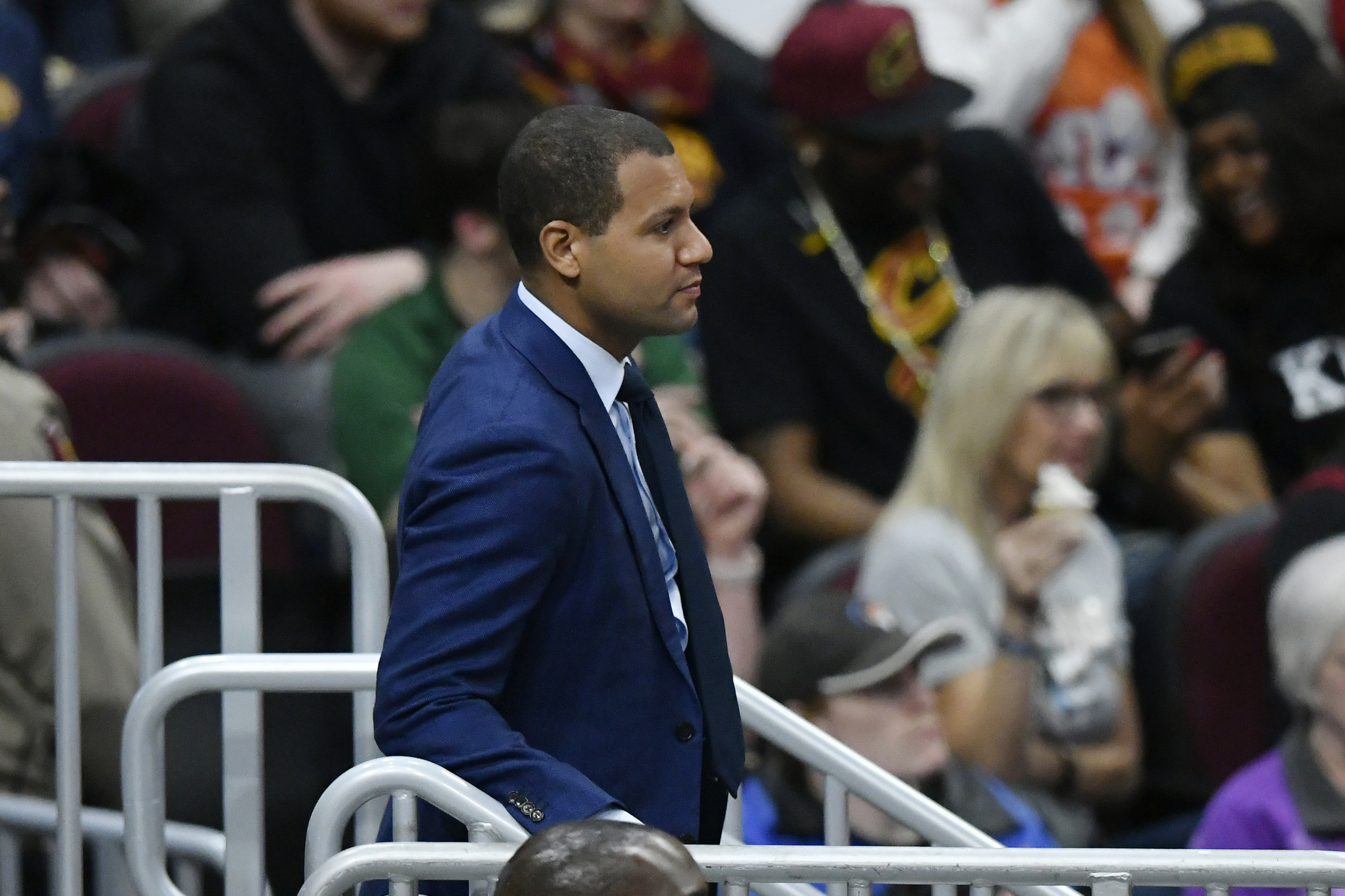
The Cleveland Cavaliers find themselves in the burgeoning stages of a rebuild renaissance two years after the larger than life force that is LeBron James left the franchise that drafted him (and the biting winters of Northeast Ohio) to join the Los Angeles Lakers and, presumably, make a preemptive move to further the potential of his post-playing career.
Selecting scoring-minded point guards in the top-10 of back-to-back drafts in Collin Sexton and Darius Garland, the Cavs have opted to shun traditional lineups and even hired a head coach in John Beilein who has plenty of experience in running what he would characterize as two-guard fronts.
With rookie wing Kevin Porter Jr. being characterized as a player who could start the season as either a starter or in the G League, highlighting his raw potential, that likely means either he or fan favorite Cedi Osman will be the team’s starting small forward.
No matter what though, three of the team’s starters will have three seasons or less experience.
The veterans in the rotation — Larry Nance Jr., Tristan Thompson, John Henson, Matthew Dellavedova, Brandon Knight, Jordan Clarkson and Kevin Love — figure to foster a competitive environment both in training camp and in the regular season. Still, this is a team that will be led by young players and that’s the reality that should drive the front office’s decision-making.
Do they go all-in on building the team from the ground up or do they seek to make splash moves that accelerate their timeline towards contention? While there are reasons to choose building the team organically, the fact of the matter is that the Cavs don’t have a team that meshes well — they’re forcing a fit with the players they want most — and that’s ultimately a recipe for disaster.
Or, at the least, disappointment.
Consequently, while next season the team should focus on player development more than they have since becoming an expansion team in 1970, they should also be buyers (and sellers) on the trade market throughout the 2019-20 season.
Trade Brandon Knight and J.R. Smith for Steven Adams, draft assets prior to season
With that said, Cleveland also has a logjam in the backcourt with three point guards — Sexton, Dellavedova and Knight — that deserve playing time.
While the first order of business for Cleveland should be trading veteran shooting guard J.R. Smith, a necessity given how he gave up on the team and showed a me-first attitude by refusing to be on the bench, the Cavs should make a trade prior to the season to clear another spot in their backcourt.
Trading Dellavedova, whose energy was infectious last season, is far less appealing than trading Knight though it may be easier to trade the former than the latter since Delly will make $9.6 million next season and Knight will make $15.6 million.
Nonetheless, moving Knight and his expiring contract (Dellavedova has an expiring contract as well) along with Smith for a relatively undesirable contract, could happen simultaneously.
The most likely candidate, in that sense then, would be Oklahoma City Thunder center Steven Adams. With the Thunder looking for salary cap relief, being able to clear at least $19.4 million from their books has to have some appeal.
As far as fit is concerned, trading for Adams would cause a logjam at center and force another trade even if Ante Zizic is included in the deal. However, should Cleveland opt to pursue Adams, it would also allow the team to get an upgrade from Thompson or even Henson — two players whose contracts are set to expire next summer anyways while Adams is signed through 2020-21.
Trade Kevin Love and Tristan Thompson for John Wall, draft assets at the trade deadline
Because Thompson has been a candidate to be traded for multiple seasons, it wouldn’t be surprising to see him moved. Yet, TT isn’t the last member of the Cavs’ championship team that should be traded in the offseason.
Love should be traded as well and, if possible, in the same deal. It’s unclear how much interest the Washington Wizards would have in such an option but by trading Love and Thompson’s combined salaries, the Cavs could swing a trade for the one of the league’s finest facilitators in John Wall.
Though an All-NBA point guard, Wall tore his left Achilles in a freak accident last season and is unsure if he’ll even be able to play next season. While that should give any team pause, Cleveland is going to be in a unique position should Wall be unable to play, given that Sexton has tried to model his game after the longtime Wizards guard.
Mentorship isn’t the only reason to add Wall, though he could certainly teach both Sexton and Garland a thing or two about passing.
Wall will likely take time to return to the point where he feels as if he could be a starter but, once he returns to full health, he’s going to be able to play next to either Sexton or Garland should Cleveland’s two guards score-first mindsets fail to mesh cleanly.
In that sense, Wall is also a safety net for a draft plan that could go awry.
Trade Jordan Clarkson for draft assets at the trade deadline
The savvy way that Jordan Clarkson played last season was a surprise but even more surprising was the guards efficiency, as he averaged a career-high 16.8 points per game on 45.8 percent shooting from the field. As a sixth man, Clarkson should draw plenty of interest from contending teams that need an extra scoring kick or to bolster their bench unit.
Teams like the Philadelphia 76ers, Golden State Warriors and Los Angeles Lakers should be willing to surrender a first-round pick, which will be a late pick given their talent, for Clarkson at the trade deadline and Cleveland should capitalize on the opportunity. Clarkson’s current contract expires next summer and after signing with Rich Paul of Klutch Sports, he’s certainly looking for a hefty sum in his next deal.
Not that Cleveland wouldn’t be willing to re-sign Clarkson but it’s unlikely they would want to overpay for him and make it harder to trade him down the road, which is their current predicament with Love and Thompson. What’s more likely is that Clarkson looks to take his talent to a contender or the Texas native looks to find warmer weather to play in during the prime of his career.
By this third trade, the Cavs should have secured at least one first-round pick, if not up to three.
Those picks will come in handy for the final stage of the master plan.
Trade Steven Adams, a young player and draft assets for Karl Anthony-Towns by the start of 2020-21 season
The Boston Celtics have shown that controlling multiple first-round picks can at least get you in a conversation about a top-five player and that’s the plan for the Cavs. With the draft assets they accumulate from trading Smith, Knight, Thompson, Love and Clarkson, Cleveland should set their sights on an elite player running in place with his current franchise.
Minnesota Timberwolves’ star big man Karl Anthony-Towns.
In terms of fit, KAT is a highly-skilled big man whose ability to stretch the floor as a center works perfectly for any of the guards on the Cavs’ roster. He’s going to dominate on the boards, be a go-to scorer whether he’s on the low-block or outside the lane, find the open man and even protect the rim.
The New Jersey native will become the face of the franchise and that’s going to bode well for the team on and off the court. Towns is extremely likable, personable, humble and an all-around nice guy that the organization will love.
He’s also the type of talent that can draw in major free agents, as he’s under contract through 2023-24 and bolsters what’s already shaping up to be a nice young core.
Unless they finish the season in position for a top-five draft pick in 2020, trading for Anthony-Towns might require the Cavs to surrender one of Sexton or Garland to what will be a point guard hungry Timberwolves team even with their pool of draft assets. It would more likely be Sexton, whose contract will have a club option for the 2020-21 season.
That said, Cleveland should have the following players under contract as their core in 2020-21:
Anthony-Towns, Wall, Garland, Nance Jr., Porter Jr. and Windler.
That’s two All-Star talents, a top-5 pick and a solid collection of young talent. Not to mention a few players who invest a lot of personal time into the local community.
Altogether, this group would make around $93 million, which leaves about $26 million in cap room for the Cavs next summer. With that amount, they can retain players like forward Cedi Osman (who will be a restricted free agent) but more importantly they try to woo a player with six seasons or less experience (likely a restricted free agent) with a max contract.
Sign Kyle Kuzma as a restricted free agent in the offseason
Over the next two offseasons, several young players like Brandon Ingram, Buddy Hield, Dejounte Murray, Jayson Tatum, De’Aaron Fox, Lauri Markkanen, Kyle Kuzma, John Collins, Pascal Siakam, Derrick White and Donovan Mitchell could hit the market as restricted free agents.
Frankly, nearly all of those players will have their offer sheet matched but it’s possible that White or Murray — two big point guards with two-way ability — could be Cavs in the near future, especially if Wall doesn’t return to his prime form.
Murray could be signed next summer.
Ingram, Siakam and Kuzma are three other players whose current franchise may hesitate to give a max deal. Ingram and Siakam, like Murray, could be signed next summer.
Ideally, Wall wasn’t acquired to be a backup point guard and had enough explosiveness prior to his injury to still be a solid athlete post-surgery. That said, Kuzma should be the team’s primary target next summer. His defensive shortcomings are a bit concerning considering the possibility that the Cavs boast a group of average-at-best perimeter defenders but he’s a far better scorer than Nance Jr., which takes pressure off the entire starting unit while making them more formidable.
It’s entirely possible the Lakers just match an offer sheet for Kuzma but so much could be in flux for the team in the offseason that the team could deem him as replaceable thanks to having plenty of cap space or fail to prioritize bringing him back, which could open the door for Cleveland to bring him in.
What players like more than anything, aside from winning of course, is feeling desired.
Potential rotation for Cavs in 2020-21:
Wall, Garland, Osman, Kuzma, Anthony-Towns, Porter Jr., Nance Jr. and Windler.
—
All that’s missing is a backup point guard and a backup center, which won’t be too difficult to find.
What’s the alternative?
Without making any moves, Cleveland is set to have $51 million in the 2022 offseason and would have Sexton, Garland, Love, Nance, Porter Jr. and Windler on the roster.
It’s enough money to sign two max free agents but frankly, it’s difficult to see marquee free agents choosing to sign in Cleveland, particularly after an offseason that saw the major players all making their way to the major markets.
That’s not to mention that the biggest fish on the market would all be at, approaching or over 30-years-old, unless the Cavs wanted to try to their hand with restricted free agents (although if a restricted free agent is that good, their former team will more than likely match the offer sheet).
Cleveland would be better off building around KAT, who’s currently just 23-years-old, as the franchise cornerstone.
Having Wall in their backpocket wouldn’t hurt either. Though his game is predicated on speed and surely going to be effected by his injury one way or another, be it confidence or ability, he’s always going to be an elite facilitator and he wouldn’t be the first guard to develop their long-distance shooting in the latter stages of their career.
Would Wall be better than Wall in two years? That’s a fair question and why the Cavs would be wise to try to hold onto the Young Bull throughout the process. However, if KAT should ever be on the trade block, other teams are going to throw their best packages out there for him and Cleveland should do the same.
In the end, while player development should be the focus and constant change will potentially have a negative effect on their development, putting together the best possible team will require the team to capitalize on their expiring contracts and the potential availability of star players.
Wall, Kuzma and Anthony-Towns would be a Big Three unto themselves but adding Garland’s explosive scoring to that group would make Cleveland an unquestionable championship-contender (or at least Conference Finals contender) in the East.
Just two seasons after LeBron skipping town to be the face of the Lakers.










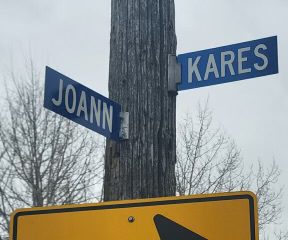

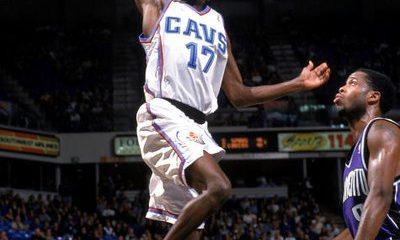

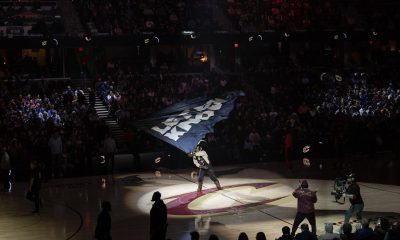

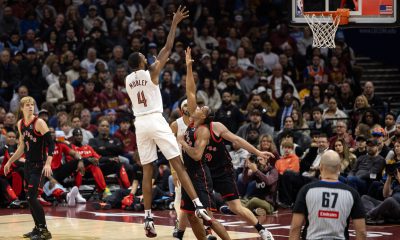

Recent Comments